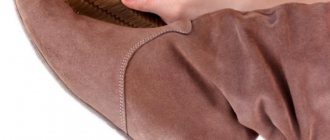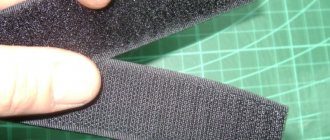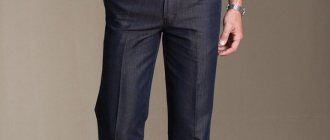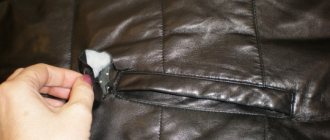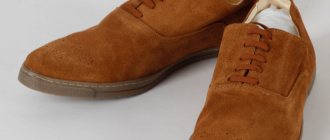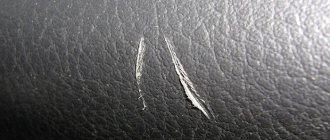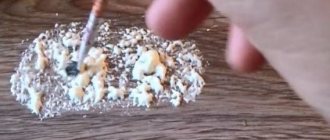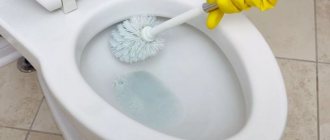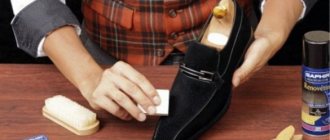When meeting a person for the first time, many people pay attention to the condition of the shoes. Its cleanliness and shine are necessary components of a neat image, and adhering dirt or stains can ruin even the most thoughtful appearance. With proper care, genuine leather can last for years and still look new and neat. There are several proven ways to clean leather shoes correctly and how to deal with difficult stains.
The importance of timely care for leather shoes
Timely cleansing of dust and dirt is key in shoe care. It is ideal to use a damp cloth to wipe the surface of the product every time after returning from the street. Ignoring this nuance leads to rapid wear of the pair, loss of shine and color. The reason for this is:
- the ability of small particles to penetrate the skin;
- desiccation of material due to exposure to dust;
- gradual cracking under the influence of reagents and salts.
It is worth regularly treating a pair of natural or artificial materials with special compounds: paints, waxes, water-repellent liquids. They can soften the skin, extend its service life and restore the aesthetic appeal of your beloved couple.
Dirty stains from clean water
If there are no stains, it is recommended to lubricate the surface with baby cream to moisturize and nourish the skin. If, after drying, salt and unsightly white outlines remain on the shoes, it is recommended to use one of the effective folk recipes. 1.1 Castor oil After the product has dried after pre-treatment, you need to take a cotton pad, soak it in castor oil and gently clean the problem areas with it. If it was not possible to remove the stains the first time, it is recommended to repeat the procedure. Sometimes regular vegetable oil is used instead of castor oil. This should not be done, because after such processing the skin will become shiny and the product will take on an untidy appearance. Another folk recipe:
- 1. It is necessary to mix fish oil and castor oil in a ratio of 3:1 and place in a water bath.
How to care for shoes made of genuine leather
High-quality genuine leather does not require complex care: it is enough to clean it, apply cream and tint the product in a timely manner. All of these operations can be done at home, but if the shoes require restoration or complete coloring, you can contact a specialized workshop for services.
What tools are suitable?
Before cleaning leather shoes, it is necessary to evaluate the suitability of the equipment. To care for the product, it is strictly forbidden to use any brushes with hard or hard bristles. You should also avoid homemade rags with hard stripes, zippers or buttons - they can scratch the product. To clean your shoes you should use:
- soft brushes;
- velor sponges;
- soft cloths;
- thin felt
To clean the sole, it is allowed to use harder materials. However, in this case, you should be careful: excessive pressure will damage the sole pattern. Shoes may become slipperier and less comfortable.
Special and folk remedies
The care product is selected based on the color, naturalness of the material, and the purpose of the leather pair.
Table 1. Ready-made shoe care products.
| Name | More details |
| Kiwi Cleaner | Suitable for natural leather, artificial material, suede, regardless of shade. |
| Hatch | An inexpensive option that can combat dirt on leather shoes. |
| Salton | An effective product that adds shine to the skin throughout the day. |
You can use home remedies to cleanse your skin. For example, the use of natural oils: linseed, castor, burdock gives an excellent effect. Natural beeswax will also work. White leather can be cleaned with baking soda and vinegar.
Preliminary stage
Before removing stains, you should:
- wash the sole with a brush;
- Wipe the surface thoroughly with a damp cloth;
- dry the product.
Note! Cleaning products cannot be used on dusty surfaces. Such “care” will lead to microdamage to the material, drying out, and penetration of contaminants deep into the material.
Rules for cleaning leather products
Some knowledge about caring for leather shoes will help simplify the process.
Table 2. How to properly clean leather shoes.
| Rules We recommend: How to soften leather on shoes | More details |
| Try not to get wet | Washing shoes in a basin or under running water is allowed only in exceptional cases. |
| Do not use powders | Such products scratch the surface. |
| Apply to dry shoes | You should absolutely not apply cream to a wet surface. |
| Apply the cream in a thin layer | This way it will be better absorbed and protect the material. |
| Give it time to absorb | After application, you need to leave the shoes for a couple of hours to soak. |
The best way to remove stains
Stains from salt and reagents can be easily removed using folk remedies. How to clean leather boots at home using:
- castor oil;
- vinegar;
- ammonia.
Apply any of these liquids to clean shoes, rub in gently, and then wipe the surface dry.
Removing stains from shoes
Cleaning features depend on the type of stain:
- Oil contamination. Can be removed using starch, soda, dish gel.
- Yellow traces. Suitable for toothpaste, paper eraser, lemon juice.
- Dye. Any solvent, but use with caution.
Cleaning with vinegar
Prepare in advance a large basin for water, paper towels or cotton pads, a piece of clean cloth and white vinegar. Next, follow the instructions:
- Take leather shoes (boots, boots) in your hands and, using any narrow object, remove accumulations of salt and dirt in all seams.
- Prepare a solution of water and vinegar essence in a ratio of 1:2.
- Next, soak a paper towel with the mixture.
- Dry the surface of the leather thoroughly with a towel.
- After cleaning, wipe the boots with a dry cloth and dry them at room temperature.
- If the stains are removed, you can apply a protective cream and polish the skin. Polishing makes the surface smoother and more resistant to the harmful effects of salt.
- It is rare to remove stains the first time. Therefore, the procedure is carried out repeatedly, each time drying and polishing the shoes.
When cleaning shoes, you should not limit yourself to clearly damaged areas. After all, water saturates the entire surface, and there may be residual salts on it that are invisible. Therefore, just in case, it is better to do a full processing.
How to clean faux leather shoes
Artificial leather is much more capricious than natural material. Even a high-quality product requires careful attention.
Removing stubborn dirt
It is worth getting rid of intense pollution point by point. It is not recommended to apply the product to the entire surface. You can get rid of stains by using:
- soda and vinegar;
- toothpaste;
- mustard powder.
The skin is pre-cleansed and completely dried. Any product is applied to the stain for 10-15 minutes. At the end of the specified time, wash or wipe the product.
Fighting stains on artificial leather
To clean eco-leather, it is worth purchasing special products. You can also use folk recommendations, but it is difficult to assess the consequences of such cleaning. Will do the job perfectly:
- Foam cleaner from Salton.
- Cleaning foam from Kiwi.
- Sponges with cleaning effect from Twist.
Universal means of combating salt stains
If a salt trace does appear on dry steam, it is better to remove it locally. Among universal cleaners, first of all, industrial sprays and foams should be highlighted, specifically designed to remove traces of reagents and table salt, for example: Tarrago de Salter, Detach Stain, Salton “Antisol”.
They are applied directly to the stain in the amount prescribed in the instructions, after which the clean area is wiped with a damp sponge.
But it is possible to remove salt from both leather and suede boots and boots in more budget-friendly ways.
How to clean patent leather shoes
Patent leather shoes are not intended for everyday wear: they are afraid of moisture, dryness, and frost. Caring for it is also very specific.
Table 3. How to clean varnished products.
| Rule | More details |
| Do not use regular brushes | They leave scratches and microcracks. |
| Buy special creams | Conventional products leave a cloudy film. |
| Pay attention to the composition of the cream | The product must contain glycerin and lanolin. |
How to remove white stains from suede boots
It must be remembered that suede boots are the least resistant to chemicals. The coating may even begin to peel off in places where there was salt.
The method described below helps greatly in this situation:
- First, stuff your boots with newspaper. After this, put them to dry, but not next to the radiator or other heating devices;
- The suede surface must be thoroughly cleaned with a shoe brush, moving in different directions. If desired, take a stationery eraser, sandpaper, bread crumb or kitchen salt;
- If after this the white spots on the shoes do not disappear, then wipe these places with a weak solution of soapy water and ammonia;
- When all the streaks are gone, you will need to let the boots sit for 5 minutes to refresh the pile a little. After this, comb the suede in one direction.
The most important thing to remember is that under no circumstances should you allow the surface of your boots to become soaked through. Suede is extremely difficult to tolerate salt. If the white spots cannot be removed, it is best to tint these areas with a special product.
Recommendations and tips for every day
Leather products are difficult to classify as budget purchases. However, their price is justified by convenience, comfort and long-lasting wear. Daily rules will allow you to extend the service life:
- Do not leave shoes near heating appliances.
- Remove the insole from the wet pair and do not put it on until completely dry.
- Use shoe polish promptly and regularly.
- Do not leave the product exposed to sunlight.
- Do not store dirty or dusty shoes.
5/5 — (3 votes)
What causes white streaks on suede?
There is only one reason for the formation of white stripes on winter boots, boots or sneakers - salt reagents that are sprayed on the roads.
Unprotected shoes quickly become covered in salt.
By dissolving the ice crust, these substances maintain stability in the ice, thereby minimizing the likelihood of injury. But sodium chloride salts also penetrate deeply into the surface of shoes, making them unsightly and difficult to clean.
If you do not cover your suede shoes with a protective film, salt and snow will quickly wear out the thin and delicate material. Nubuck and fabric also pack a punch, responding a little more easily to thick leather. Stains do not appear immediately, but after the surface has completely dried. By not reacting in time or simply painting over dirty stains, you will irrevocably damage the shoes that they just throw away.
And if you throw it in the machine...
No matter how attractive this idea may be, washing leather shoes in a washing machine is not recommended. But if the sneaker manufacturer doesn’t prohibit it, you can take a risk. To do this, put them without laces and insoles in a washing bag, select the delicate mode and turn off the water heating. You will also have to give up powder and squeezing. Paper will help to properly dry leather shoes after washing. This way, moisture is absorbed faster and the sneakers do not become deformed.
Article on the topic: Whose Braska shoes
Some manufacturers provide customers with instructions that detail how to care for shoes made of genuine leather. Usually it does not differ from generally accepted rules. But when making a purchase, it is better to check with the seller about the care features of a specific model. You should also pay attention to the fittings, zippers and laces. They also need to be monitored to maintain their presentation.
What should be on hand
Having bought leather boots, immediately decide on the set of necessary “care” products and how to use them. The recommendations are simple: give preference to well-known brands and strictly follow the instructions on the packaging. It is better to buy such products in specialized stores. Experienced consultants will help you choose the right product. Homemade substitutes are not inferior in their effectiveness to industrial ones. Their main advantage is time-tested availability and safety. The most popular of them are the following.
- Castor oil . You can buy it at the pharmacy and use it to protect against moisture. To keep shoes dry in wet weather, warm castor oil is applied to the smooth surface. Particular attention is paid to seams and joints on the outside. Oil treatment also helps when shoes become dark from water.
- Glycerin. Sold in pharmacies and cosmetics stores. Using a sponge, they rub shoes with it so that the leather does not crack and retains its softness and shine.
- Ground coffee . Often used as a paint substitute. Its brown color will hide small scratches and abrasions on material of the same color. To hide imperfections, just cover them briefly with coffee gruel and then polish them to a shine.
- Dentifrice . Helps whiten white leather shoes. Using a soft toothbrush, spread the wet powder over the surface and gently brush. There is no need to replace it with paste. It contains abrasive particles that may cause scratches.
- Vinegar . A universal assistant that can clean light leather shoes from yellow stains and remove dirt from suede. Stains are removed by wiping with a 9% solution. Before the procedure, a suede pair must be thoroughly cleaned of dust, and then treated with a preparation to restore color.
- Eraser. An ordinary school grater perfectly removes colored and black stripes from shoes and sandals.
Article on the topic: How to draw shoes with a pencil step by step
